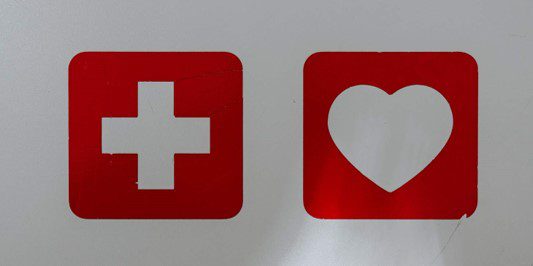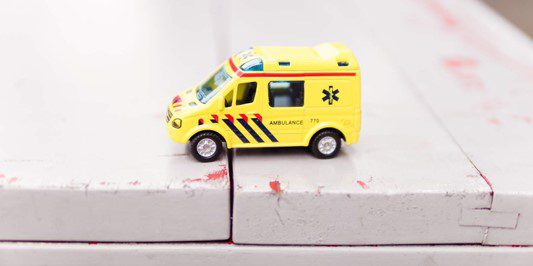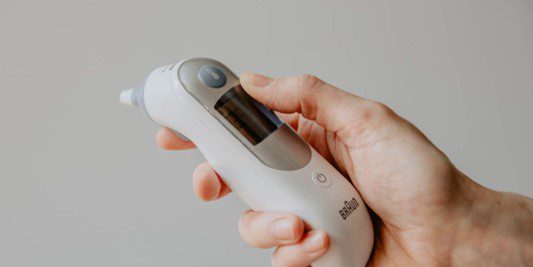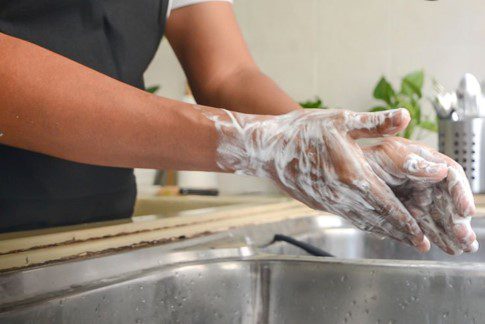Fit2Nurture
A Solution to help Childminders with the Regulations
First Aid Training. Childminding Services Handbook. Risk Assessments. Incident Reporting tool.
Childminding Regulations Podcast

Fit2Nurture for Childminders makes compliance with the new regulations simple, reduces risk and protects your reputation
Over 3,000 Childcare Providers choose Fit2Nurture because...
You get a Safety Statement specific to your Childcare setting saving you time and money.
All employees are trained on the hazards, risks and control measures.
Demonstrate Food Hygiene compliance to Environmental Health Officers.
Reports to show to TUSLA that you’re compliant with the Safety and Health at Work Act.
Easily track incidents, accidents and near misses with a fully-automated digital tracking system.
Train all employees on Paediatric First Aid, without sending them on a physical course.
Demonstrate to insurers that you’re compliant with legislation.
We work with TUSLA to create the courses on CAPA, Registration Renewal, Feedback and Concerns.
Childminding Service Handbook
The online handbook can be edited to suit your service and a link sent to parents.
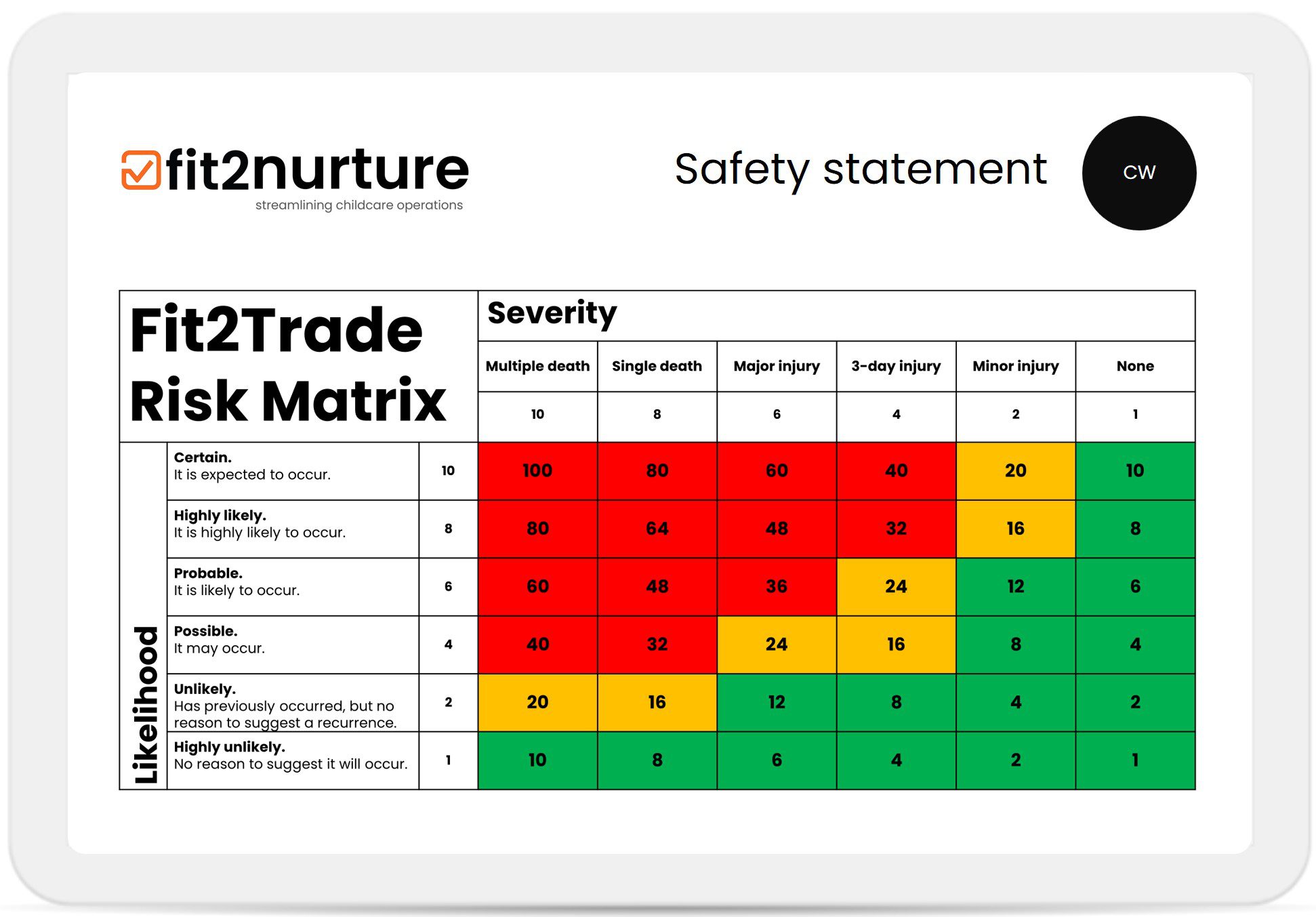
Digital Safety Statement for your Childminding Service
The online safety statement includes your H&S Policies in one place.
Childminding Risk Assessments
You get access to our pack of ready made Risk Assessments for Childminding that explain the hazards and control measures.
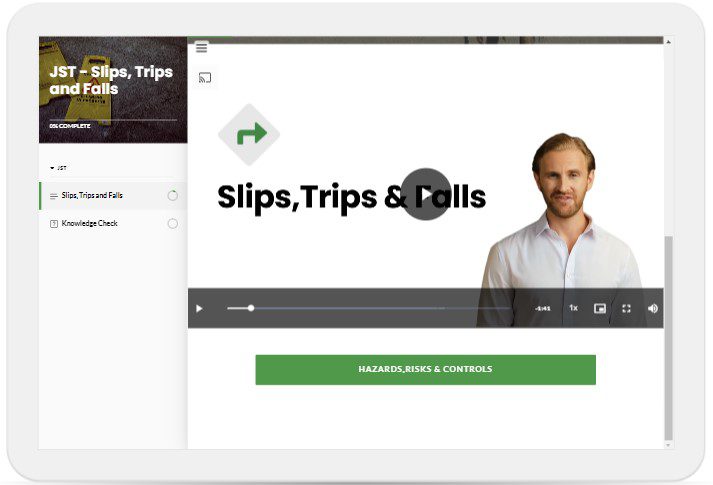
Childminder Risk Assessments
Home Environment Risk Assessments
- General Safety of Rooms:
- Assess hazards such as sharp edges, unstable furniture, or objects that could be pulled down.
- Electrical Safety:
- Check for exposed wires, accessible sockets (ensure socket covers are in place), and positioning of electrical appliances.
- Fire Safety:
- Ensure working smoke alarms, fire extinguishers, and fire blankets are in place. Identify exit routes and conduct fire drills.
- Bathroom Safety:
- Risk of drowning (bathtubs), slipping, access to cleaning materials or medications.
- Kitchen Safety:
- Access to sharp objects, hot surfaces, and cleaning products. Secure storage for hazardous materials.
- Staircase Safety:
- Ensure stair gates are in place for young children. Evaluate the risk of falls or tripping.
- Safe Sleep Area:
- Ensure the sleep environment follows safe sleep guidelines, with no loose bedding, cords, or other hazards.
- Heating and Cooling Systems:
- Assess the safety of radiators, fireplaces, space heaters, or air conditioning units.
- Furniture and Toys:
- Ensure all furniture and toys are age-appropriate, non-toxic, and regularly checked for wear and tear or broken parts.
Safe Sleep Risk Assessment
- Sleep Environment:
- Ensure sleep spaces are free from suffocation hazards and provide safe sleeping arrangements (e.g., cots, clean bedding).
- Monitoring Sleep:
- Ensure children are regularly checked while sleeping, particularly young infants.
Manual Handling Risk Assessment
- Lifting and Carrying Children:
-
- Assess the risk of injury when lifting or carrying children, particularly for older children who are heavy. Use proper techniques to avoid strain.
Outdoor Space Risk Assessments
- Garden/Park Safety:
- Ensure the outdoor play area is secure, with no access to hazards like garden ponds, gates, or tools.
- Play Equipment:
- Regular checks for stability, sharp edges, and suitability for the age group of children.
- Trip Hazards:
- Identify and address uneven surfaces, steps, or other potential hazards.
- Animals and Pets:
- Assess the risks of contact with pets, including allergies, bites, or zoonotic infections. Ensure pet areas are separate from children’s play areas.
Outings and Travel Risk Assessments
- Transporting Children (car):
- Ensure car seats are age-appropriate and properly installed. Assess the risk of traveling on busy roads or motorways.
- Public Transport:
- Consider risks like crowding, getting on and off buses/trains safely, and supervising children in public spaces.
- Walking to Local Areas:
- Road safety (crossing streets), ensuring all children hold hands or wear high-visibility clothing.
- Visiting Playgrounds or Public Areas:
- Check equipment safety and ensure adult supervision in crowded places.
- Risk of Lost Children:
- Put measures in place for preventing children from wandering off, such as headcounts and keeping them within sight and hearing distance.
Child Supervision Risk Assessments
- General Supervision:
- Ensure children are always within sight and hearing distance. For activities involving higher risks (e.g., sensory play, mealtimes), more focused supervision may be required.
- Visitors to the Home:
- Risk-assess visitors to ensure they are never left unsupervised with the children.
Food and Drink Risk Assessments
- Allergy Management:
- Assess the risks of cross-contamination and ensure strict monitoring of children with food allergies.
- Choking Hazards:
- Ensure food served is appropriate for the child’s age and ability (avoid small, hard foods for toddlers).
- Food Hygiene:
- Assess kitchen hygiene practices, including proper storage, preparation, and cleaning, to avoid foodborne illnesses.
Infection Control Risk Assessments
- Hand Hygiene:
- Assess the routine for handwashing, particularly before meals and after outdoor play.
- Illness Prevention:
- Ensure proper procedures are in place for managing sick children and preventing the spread of contagious illnesses (e.g., sanitizing toys and surfaces).
- Nappy Changing and Toilet Training:
- Ensure safe, sanitary practices for changing nappies, including use of gloves, proper disposal, and cleaning of changing areas.
- First Aid and Medical Emergency:
- Assess the availability of first aid supplies and the accessibility of emergency contact numbers.
Emergency Risk Assessments
- Fire and Evacuation Procedures:
- Ensure evacuation routes are clear and understood, and fire drills are practiced regularly.
- Emergency Contacts:
- Ensure all children’s emergency contacts are up to date and easily accessible.
- Emergency Cover:
- Assess the plan for emergency cover in case the childminder is unable to continue caring for the children due to illness or injury.
Technology and Internet Use Risk Assessment
- Safe Internet Practices:
- Ensure any internet or device use is appropriate and supervised, protecting children from exposure to harmful content.
.
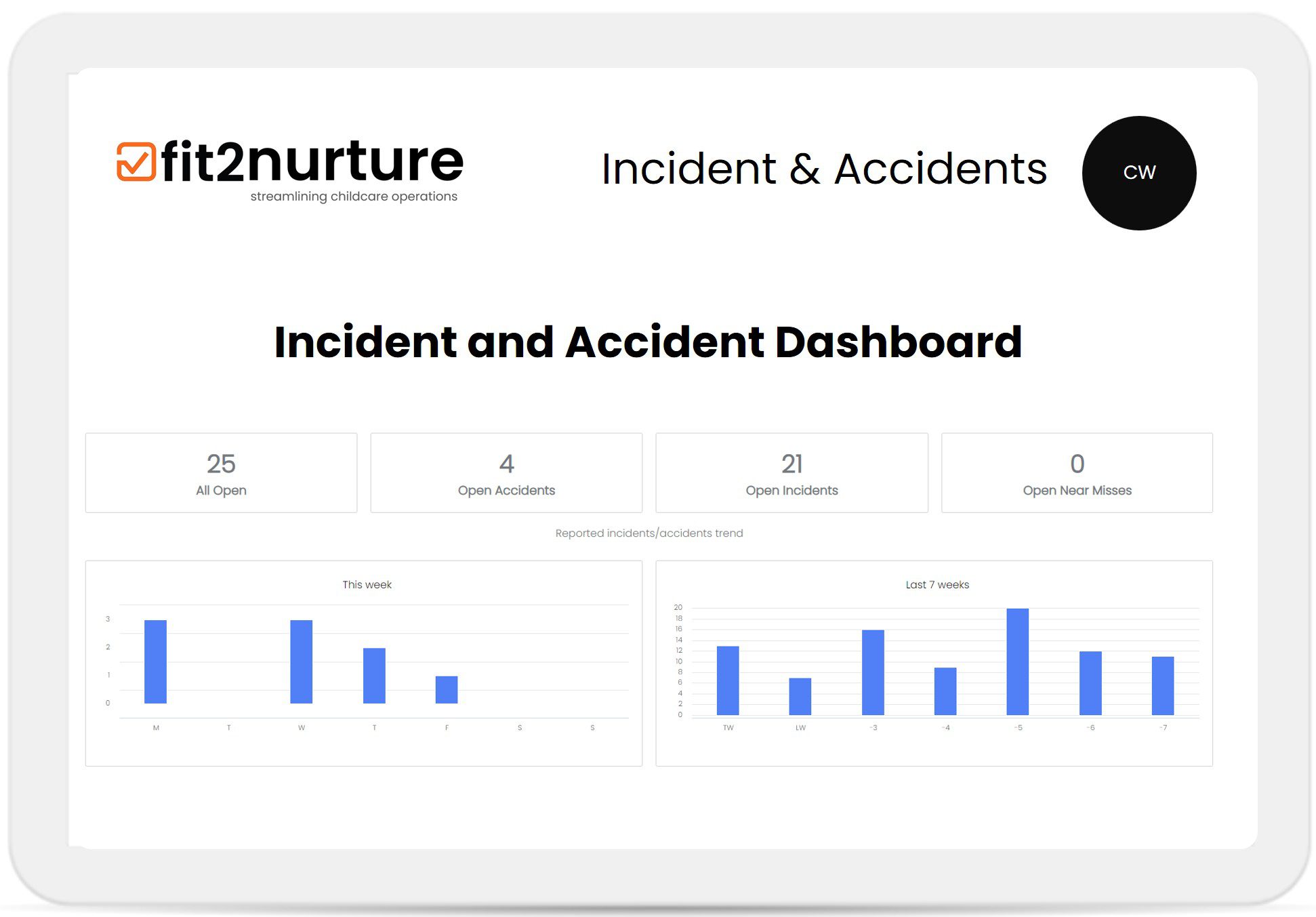
Incident & Accident Reporting
Efficiently report and manage any Incidents & Accidents. Enables simple reporting to the Tusla.
Digital Routines and Checklists
Get real-time visibility of the completion of all H&S checks in your setting. We digitize your paper Daily, Weekly, and Monthly checks so they’re completed on mobile.
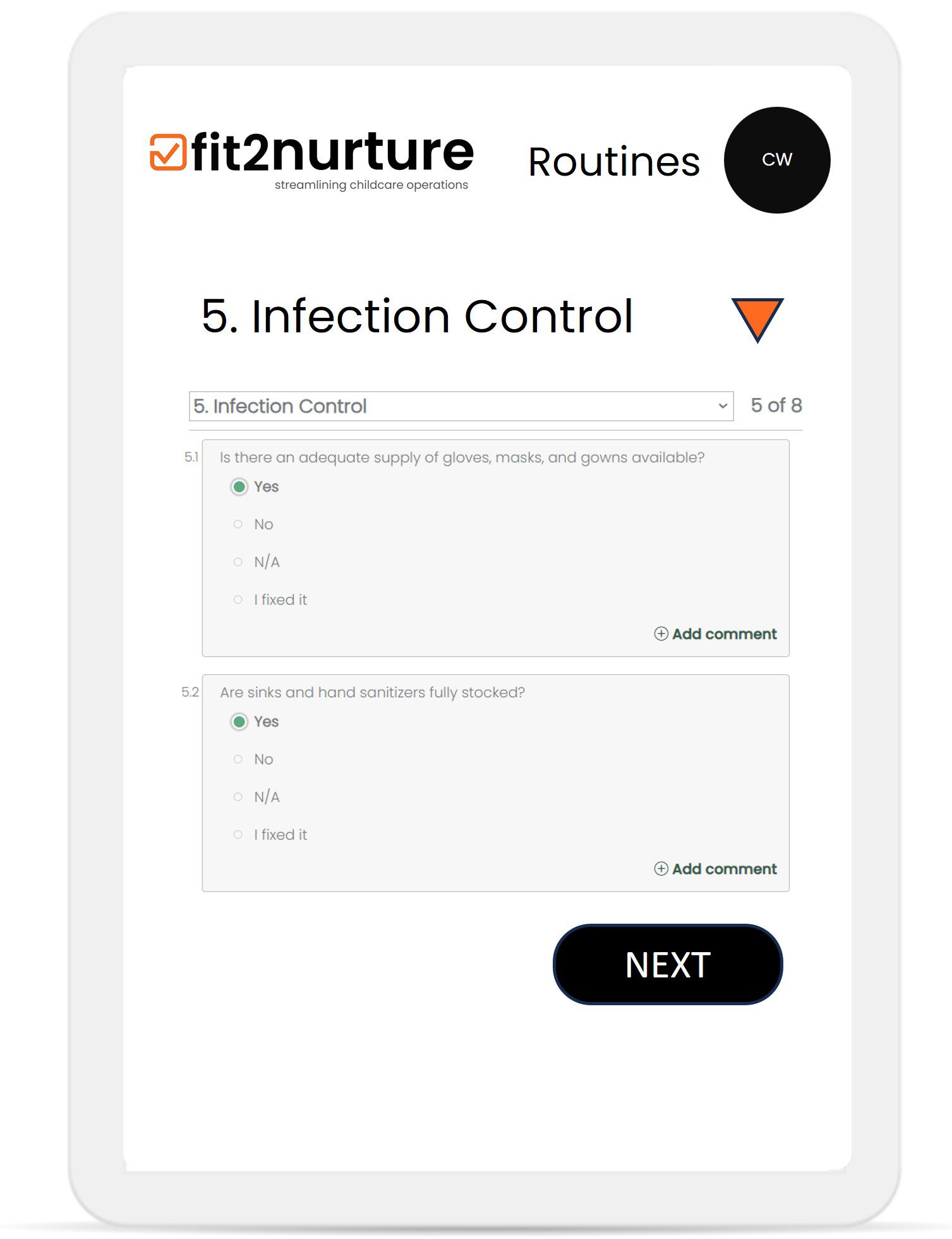
Online Courses
Childminding Package
- Includes
- First Aid Training course and Certification to give to Tusla.
- All other Safety Courses you need
- The Childminding Service Handbook
- Daily, Weekly, Monthly H&S Routines
- Digitized Risk Assessments
- Incident & Accident Reporting

Christian, our Early Years Manager, will send you a payment link and login details

